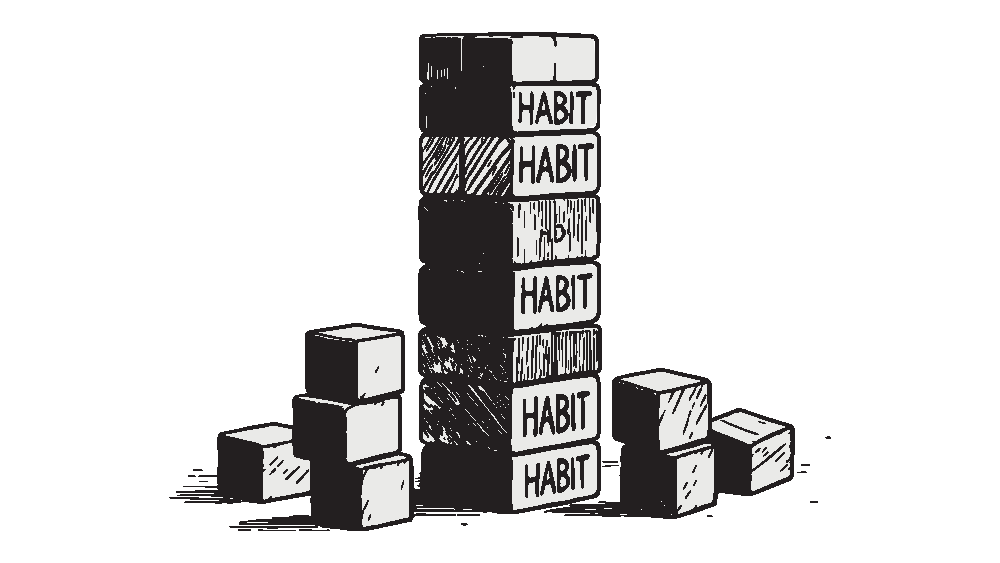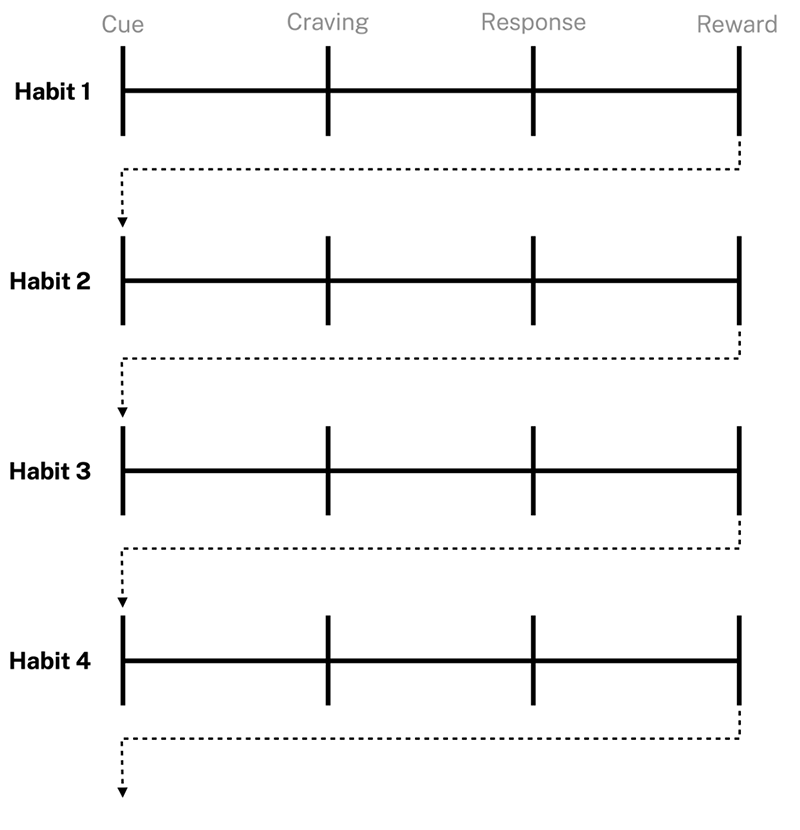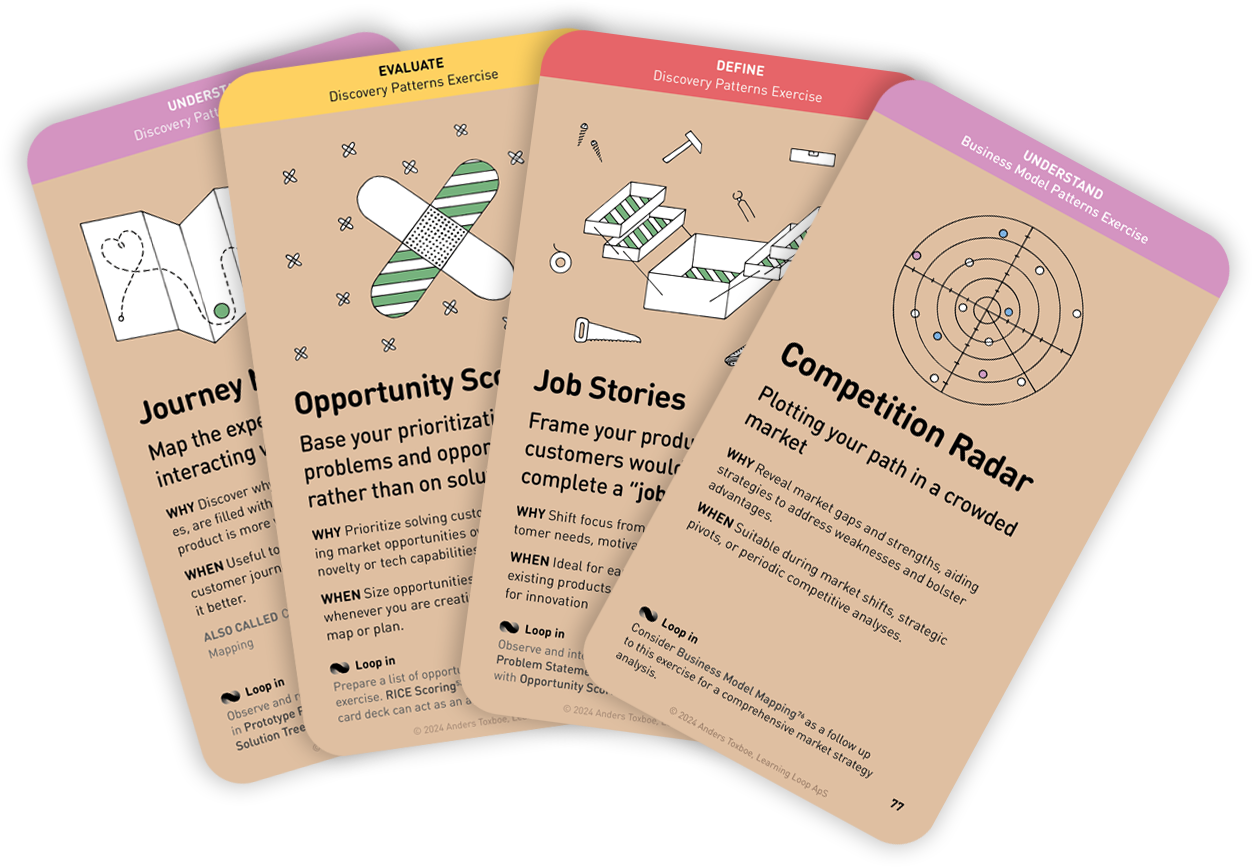Workshop Exercises: Ideate
Habit Stacking
Integrate new user habits by associating them with existing ones

Why: Leverage already established habits as anchors for new ones to make the introduction of new habits feel more natural and less intrusive, and reduces resistance.
When: Use when getting users to perform new recurring behavior.
James Clear’s Habit Stacking model is an approach to behavior modification, focusing on associating new habits with established ones, making the adoption of new behaviors feel like a natural extension of existing routines. For products that aim to induce habit formation, weaving new behaviors into users’ established routines is a very useful framework.
In Habit Stacking, cues are integral, often represented by established habits that lead to the initiation of the new, stacked habit. The specificity and immediacy of these cues are crucial, determining the success of the newly adopted habit. The habit stacking formula, “After/Before [CURRENT HABIT], I will [NEW HABIT]” provides a clear structure, linking new habits explicitly to well-established ones, ensuring smooth transitions and minimizing friction and resistance.
This approach facilitates creating habit-forming products by aligning new behaviors with users’ existing routines, reducing cognitive load and making the adoption of new behaviors more frictionless.
Instructions for running this play
- Introduction to Habit Stacking
Quick overview of James Clear’s Habit Stacking concept and its relevance in product design.

- Identify the target habit
Define the specific habit you desire users to adopt and clearly articulate the desired outcome and behavior. - List existing user habits
Using user research data or user journey maps, list the current habits of your users. Evaluate and score each habit as:- Good (beneficial and should be maintained)
- Bad (detrimental and needs alteration)
- Neutral (doesn’t significantly impact the user’s life)
- List routine events in the user journey
Identify and list consistent events in a user’s recurring journey with your product that can act as triggers. Examples include:- Receiving a notification
- Completing a task within the app
- Regular intervals, like morning or lunchtime
- Identify habit stacking opportunities
Combine the lists from Steps 2 and 3 and analyze the combined list to identify optimal points where the new habit can be naturally integrated into the user’s existing routine. -
Create habit stacks
Using the habit stacking design formula, create habit stacks for the top 3 opportunities identified in Step 4:
After/Before [USER PERFORMS SPECIFIC ACTION],
the system will [PROMPT/ENCOURAGE NEW ACTION].Ensure that each stack is coherent, actionable, and is likely to encourage the desired behavior.
A collection of workshop exercises that will help you ditch dull meetings and facilitate with confidence. It will help you master the design process and have more productive time with your team. The card deck will be ready for purchase in the end of 2026 and is now undergoing rigorous testing.
Reserve your deck!- Clear, J. (2018). Atomic habits: An easy & proven way to build good habits & break bad ones. Avery.

